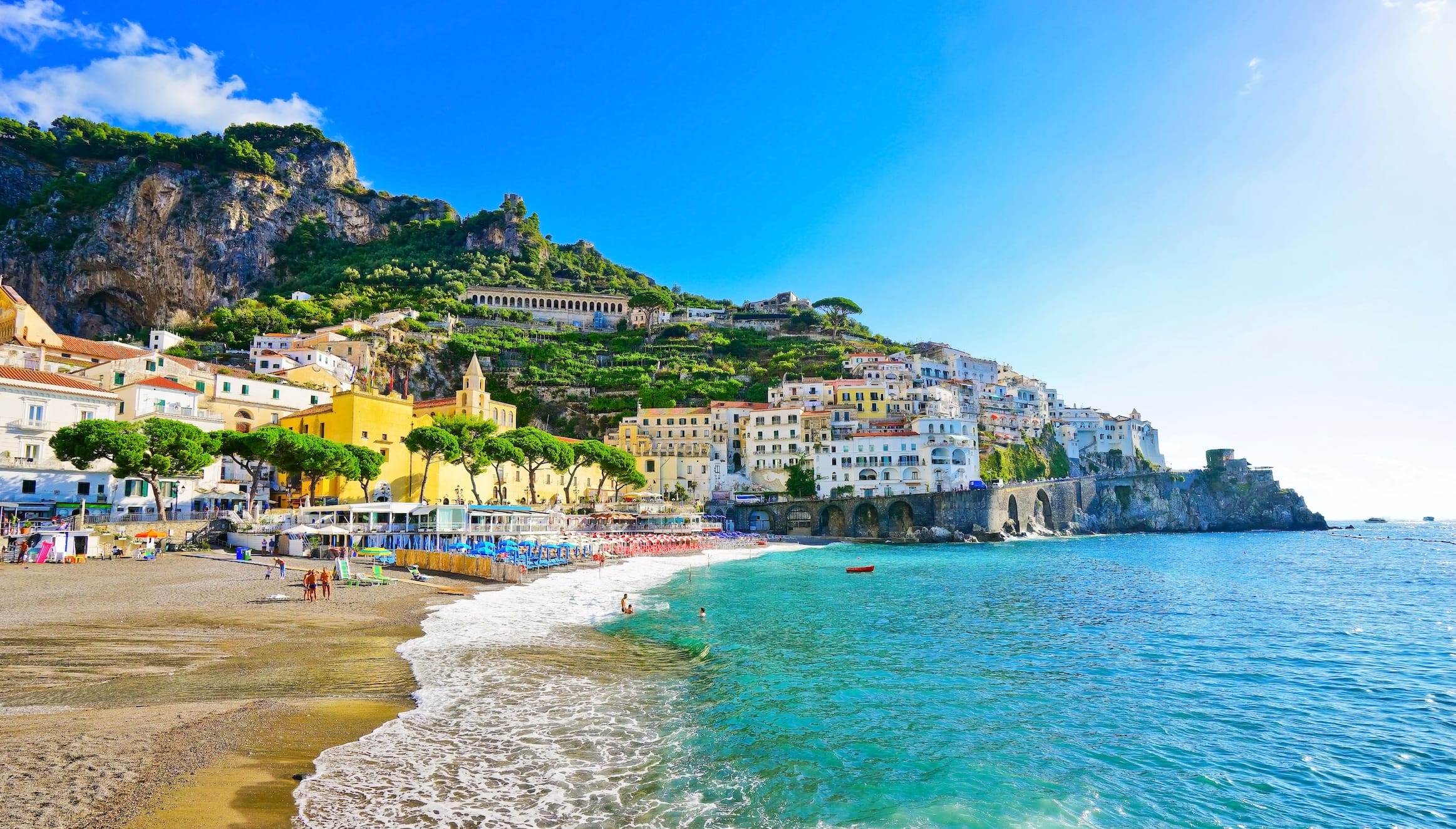Discovering an iconic and familiar place, among churches, museums, beaches, and staircases
There are places we think we know—even if we’ve never been. They’re so deeply embedded in our imagination that, once we finally reach them, it feels like reconnecting with an old friend. Amalfi is one of those places: it greets us with its light and colors and immediately feels familiar, like part of a shared story. Salvatore Quasimodo, a Sicilian poet enamored with this coastal town, once called it “the garden we always search for in vain after the perfect places of our childhood,” capturing the nostalgic and familiar feeling this jewel of the Amalfi Coast evokes.
Seen from the sea, it’s no surprise Amalfi has long been a sought-after destination and a coveted territory—both a point of arrival and departure for many different peoples. As the first of Italy’s Maritime Republics, it has always been tied to the sea and those who navigate it. Not coincidentally, the Tavole Amalfitane—the oldest known maritime code in Italy—was drafted here in the 11th century and went on to regulate Mediterranean trade until the 16th century.
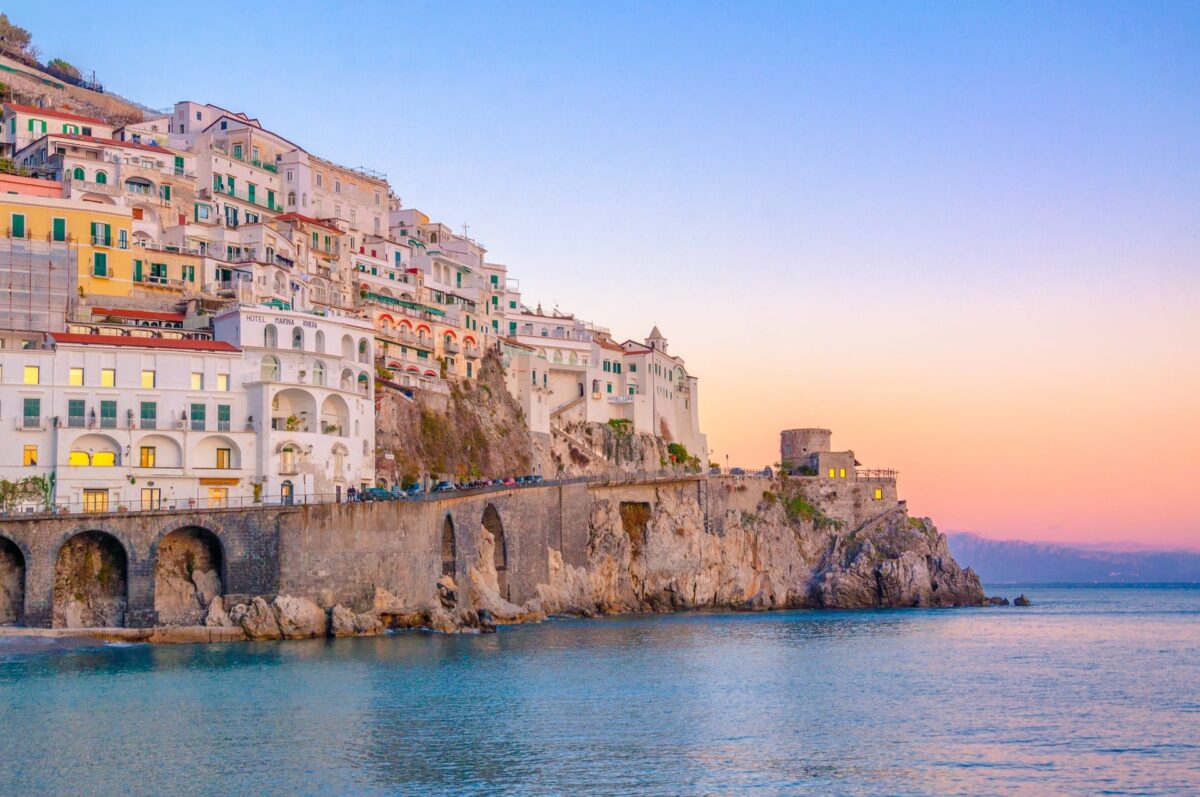
A Journey Through Centuries of History
Visiting Amalfi today feels like calling on a treasured friend who always knows how to make you smile. Whether you’re there for the beaches, the lively streets, the stunning coastal views, or a deep dive into history and culture, Amalfi will steal your heart. Of course, some places are a must-see—even if you’re only here for a dip in the sea. We’re talking about the city’s architectural heritage, living proof of a centuries-old history embodied in the beauty of its monuments.
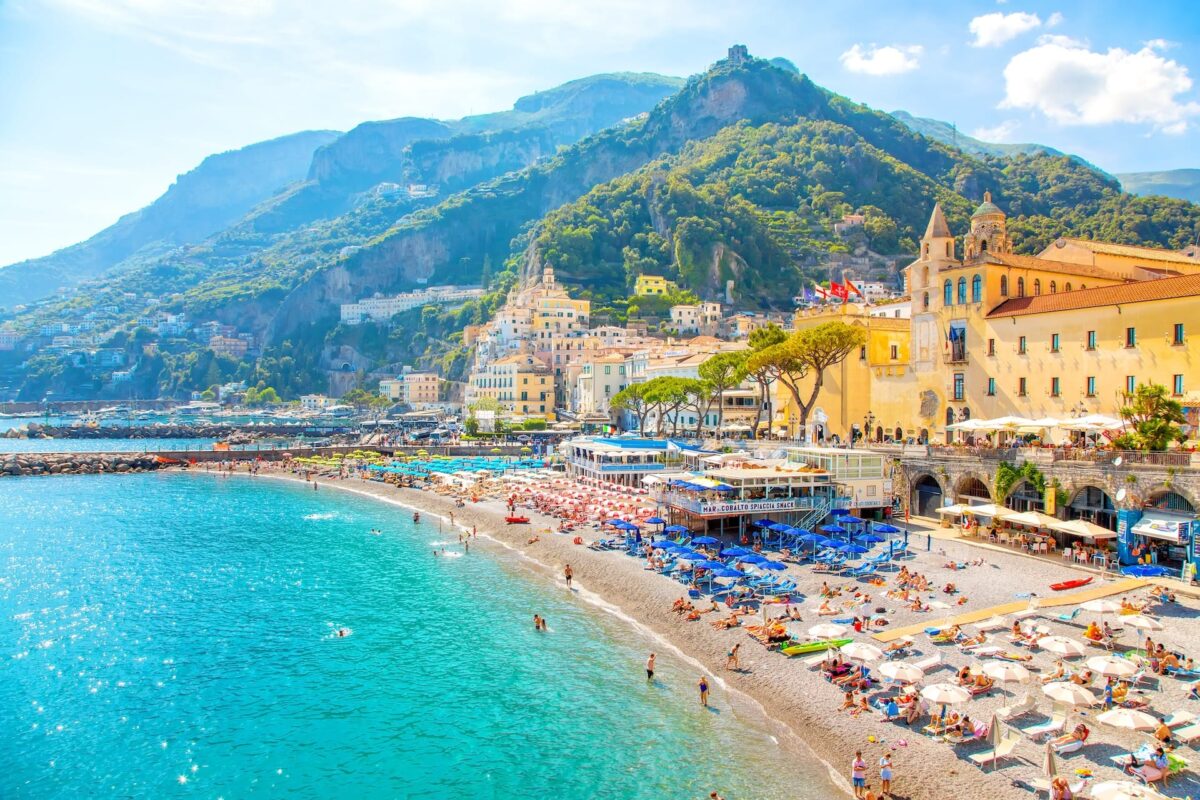
The Cathedral of Saint Andrew
First on the list has to be its magnificent Duomo. Also known as the Cathedral of Saint Andrew, it’s a classic must-see—especially for those just passing through. Reaching it is a story in itself. Located in the heart of the historic center on Piazza Duomo, it’s accessible via 55 dramatic steps that are part of its iconic façade.
Founded in the 10th century during the Arab-Norman era, the cathedral’s rich history is evident in its blend of styles: the striped façade reflects Byzantine and Romanesque influences; the atrium hints at Gothic origins; while the interior shows Baroque and Rococo touches. Don’t miss the mosaic by Domenico Morelli on the tympanum depicting The Triumph of Christ or the bronze door, commissioned in Constantinople in 1060 by a wealthy local patron.
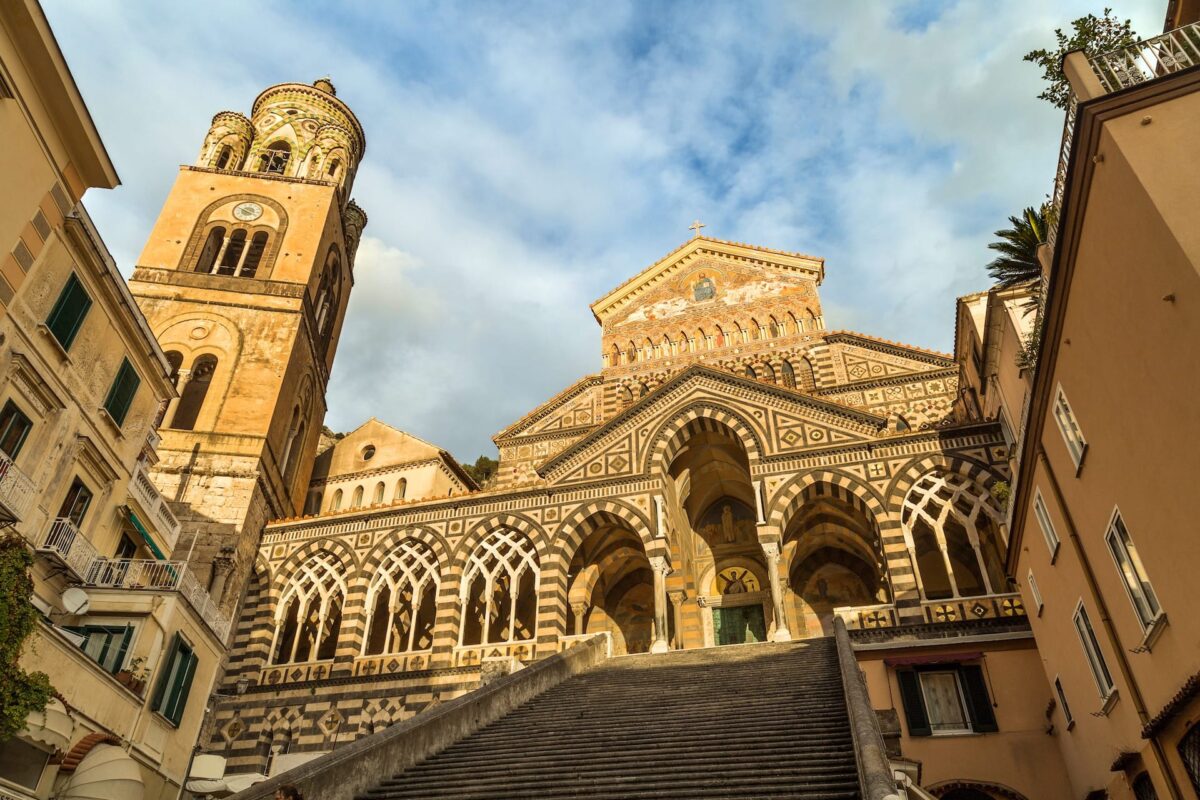
The Cloister of Paradise
Just steps from the cathedral lies another Amalfi treasure: the Cloister of Paradise (Chiostro del Paradiso), part of the same monumental complex. One of the most beautiful on the coast, it was built in the Amalfitan-Romanesque style between 1266 and 1268 and was originally used as a cemetery for nobles. With its Moorish-style pointed arches supported by paired marble columns and a lush inner garden, the cloister offers a timeless and spiritual atmosphere enhanced by the interplay of light and shadow in its vaulted arcades.
The Basilica of the Crucifix
Now deconsecrated but still an integral part of the Duomo’s architecture is the Basilica of the Crucifix. It represents the original nucleus of the cathedral, with foundations dating back to the 6th century. Located between the cloister and the cathedral, it shares the same façade and is accessed through the final left arch of the portico.
As the new cathedral gained prominence near the year 1000, the old basilica became part of a six-aisled complex. In the 13th century, it was restored in Moorish style, with arched windows added to its façade and side walls. The left aisle was removed in 1268 to make room for the Cloister of Paradise. Dedicated to the Crucifix, it was later adorned with Baroque features in the 17th–18th centuries, which were removed starting in 1931 to restore its original look. Since 1996, it has housed the Diocesan Museum.
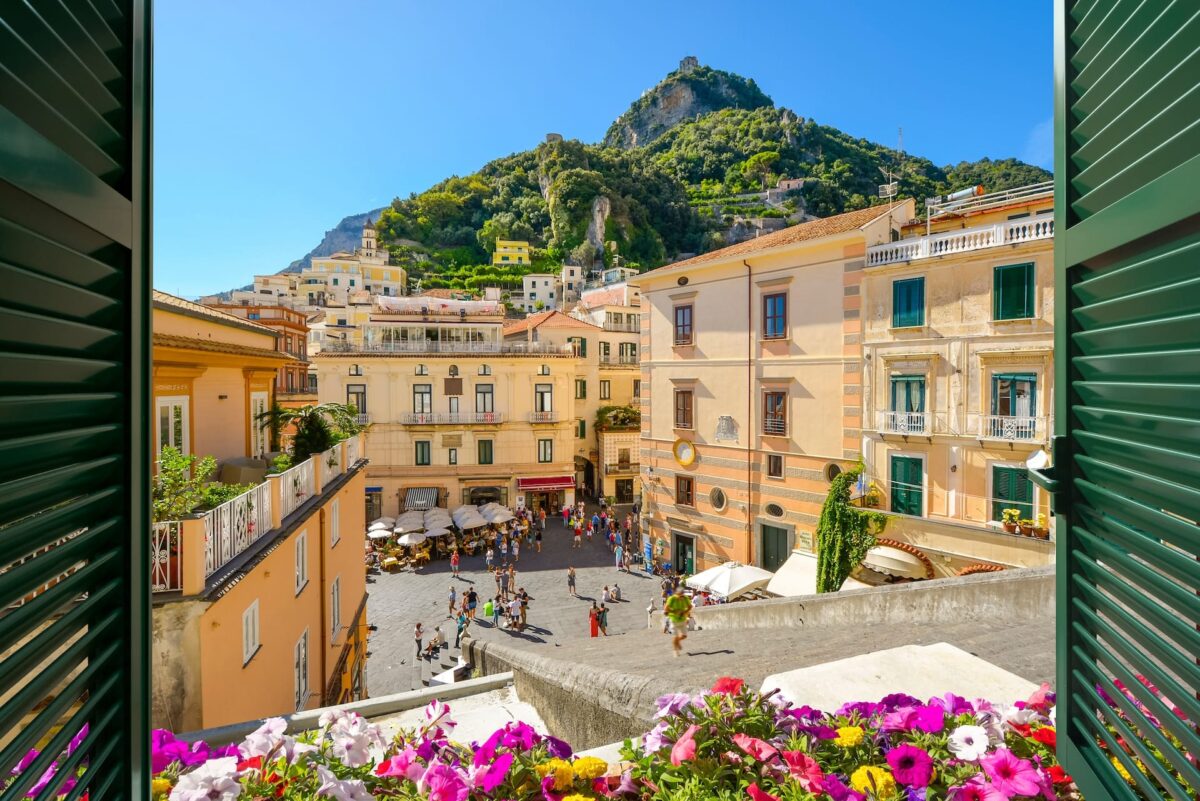
Vagliendola District
To soak in the true local atmosphere, head to the Vagliendola district. One of Amalfi’s oldest and most charming neighborhoods, it sits on the hillside with a maze of narrow alleyways, courtyards, and stairways, dotted with white and pastel houses topped with vaulted roofs and balconies overflowing with flowers. While wandering its labyrinth, look out for historic places of worship like the Church of San Biagio, whose bell tower overlooks the sea, and the monumental complex of San Pietro alla Costa.
The Arsenal
From Vagliendola, it’s a short walk to the Arsenal (Arsenale), considered the symbolic monument of the Amalfi Maritime Republic. It’s a rare and important example of medieval architecture, the only one in southern Italy that has retained its original structure. Visiting it means stepping back to Amalfi’s golden age, to the shipyard where the city’s grand vessels were built.
Dating to the 9th century and entirely made of stone, the original complex had three arcades extending to the sea. Today only part of it survives, as nature and time have taken their toll, but the remaining vaulted ceilings are still impressive. Restored in 1934 and open to the public, the Arsenal now hosts exhibitions and cultural events, and since 2010 has housed part of the Compass and Maritime Republic Museum.
The Paper Museum
Before heading to the beach, stop by the Paper Museum (Museo della Carta), a tribute to one of Amalfi’s ancient prides: the production of handmade “bambagina” paper. The museum is housed in a medieval paper mill, one of the city’s oldest industrial buildings, located in a lush valley crossed by a stream. The sound of flowing water—essential to paper production—adds to the unique ambiance.
The museum features permanent exhibitions documenting the history of Amalfi paper, including antique machinery, hammers for grinding cloth, and a hydraulic press.

The Most Beautiful Beaches
Once your cultural curiosity is satisfied, it’s time to embrace Amalfi’s everyday pleasures: strolling through its alleys, enjoying panoramic views, indulging in some shopping and excellent food, and of course, plenty of sea and sun. There’s no shortage of beaches—from easy-to-access ones to secluded coves.
Among the best-known are Duoglio, Marina Grande, and Santa Croce, but Amalfi’s coastline is full of alternative spots. Just getting there is an experience. Take Duoglio Beach, for instance—only a kilometer from town and reachable via a dramatic staircase of nearly 500 steps. If stairs aren’t your thing, you can also get there by boat.
Marina Grande is Amalfi’s largest and most popular beach. Despite the crowds, it’s worth a visit for its central location and amenities, with both private beach clubs and free areas accessible on foot.
Santa Croce is another iconic beach, reached by a long, scenic staircase. Once there, you’ll enjoy soft, light-colored sand along a rugged cliffside.
Finally, for the adventurous, there’s the tiny beach at the Furore Fjord (Fiordo di Furore), accessible only by boat or a steep staircase. It’s bathed in sunlight for just a few hours a day and offers no services—but that’s precisely its charm. You’ll be rewarded with a magical, romantic experience between sea, cliff, and sky.

